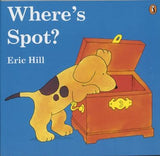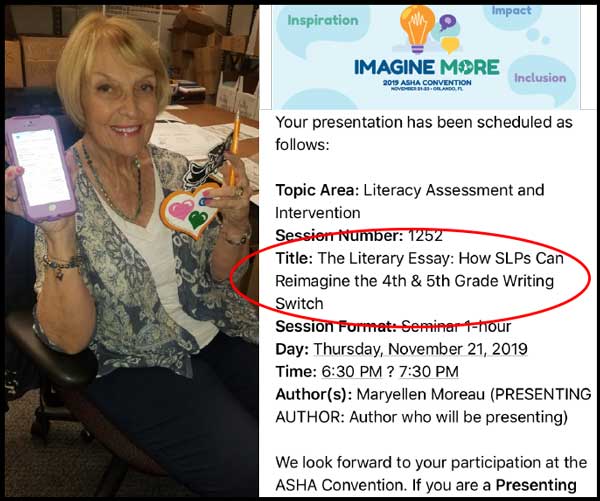Secure Checkout + FREE SHIPPING (U.S. Orders over $60)
Menu
-
- Home
-
About Us
-
The Approach
-
Linking Language & Literacy
-
Professional Learning
-
Learning Resources
-
SHOP
-
Blog
-
- About MindWing
- Our People
- Contact Us
- Your Account
- Login
-
United States (USD $)

Secure Checkout + FREE SHIPPING (U.S. Orders over $60)
Character Development, Six-Second-Stories™ and Jojo Siwa
by Sheila Moreau July 25, 2019 4 min read
 This past week my 5-year-old daughter Casey went to camp. On the first day, I suggested that she wear a T-shirt that depicts something she likes (LOL: Dolls, Unicorns, JoJo Siwa, Mermaids, Teenage Mutant Ninja Turtles, etc.) so that when she is meeting new friends, they can immediately know something she likes and ask her about it. She chose a T-shirt with a picture of “JoJo Siwa,” who is a young, popular performer. By wearing that, new friends will know a little about her as a “character” in a social setting.
This past week my 5-year-old daughter Casey went to camp. On the first day, I suggested that she wear a T-shirt that depicts something she likes (LOL: Dolls, Unicorns, JoJo Siwa, Mermaids, Teenage Mutant Ninja Turtles, etc.) so that when she is meeting new friends, they can immediately know something she likes and ask her about it. She chose a T-shirt with a picture of “JoJo Siwa,” who is a young, popular performer. By wearing that, new friends will know a little about her as a “character” in a social setting.
Upon arriving at camp, within 30 seconds, a Dad and daughter  walked in and the Dad said, “You like Jojo Siwa? Avery and her mom saw Jojo Siwa in a concert this summer!” He was referring to his daughter Avery, stating a possible common interest between the two girls. What he said is actually a Six-Second-Story™ as described in our book Facilitating Relationships.
walked in and the Dad said, “You like Jojo Siwa? Avery and her mom saw Jojo Siwa in a concert this summer!” He was referring to his daughter Avery, stating a possible common interest between the two girls. What he said is actually a Six-Second-Story™ as described in our book Facilitating Relationships.

A Six-Second-Story™ is a kernel sentence at the Action Sequence level of Narrative Development. This includes Character(s) (who), Action (is doing what), where and when (Setting). It starts a conversation in such a way that the speaker provides enough information for the listener to be able to respond. The entire method for using Six-Second-Stories™ for conversation repair is delineated in Facilitating Relationships.
Shortly after this encounter with Casey, a camp counselor approached and said to Casey “Hello, I’m Lilly—I see you like Jojo Siwa—is that a Jojo bow in your ponytail?” This camp counselor was adept at engaging the campers and had very good social communication skills. She clearly knew that to start a conversation, she should identify an interest that they could converse about easily.
 “Friend files,” coined by Michelle Winner of Social Thinking, is described as a concept in which we keep mental records of our friends’ personality, appearance, characteristics, likes, dislikes, and interests, in order to know what they have in common with each other, which, in turn, will facilitate a friendship. She refers to friend files as “imaginary files in our brain.” More information about this concept can be found in Winner’s book: Think Social! A Social Thinking Curriculum for School-Age Students or in this MindWing blog by Sean J. Sweeney: Synergy Between MindWing Concepts and Social Thinking.
“Friend files,” coined by Michelle Winner of Social Thinking, is described as a concept in which we keep mental records of our friends’ personality, appearance, characteristics, likes, dislikes, and interests, in order to know what they have in common with each other, which, in turn, will facilitate a friendship. She refers to friend files as “imaginary files in our brain.” More information about this concept can be found in Winner’s book: Think Social! A Social Thinking Curriculum for School-Age Students or in this MindWing blog by Sean J. Sweeney: Synergy Between MindWing Concepts and Social Thinking.
The Story Grammar Marker® comes into play when we focus on organizing the concept of “Character,” which is much more than a pronoun or name.  Character description is important not only for conversation and relationships, but in stories, literature, and social studies also, in order to understand character motivation and motivations of historical figures.
Character description is important not only for conversation and relationships, but in stories, literature, and social studies also, in order to understand character motivation and motivations of historical figures.
 For example, the character Goldilocks could be viewed as a cute little girl who liked skipping through the forest. However, it would be important to know that she was curious, daring and brave. These personality traits help us to understand what compelled her to enter the Three Bears’ home in the first place.
For example, the character Goldilocks could be viewed as a cute little girl who liked skipping through the forest. However, it would be important to know that she was curious, daring and brave. These personality traits help us to understand what compelled her to enter the Three Bears’ home in the first place.
 In history, we know what Abraham Lincoln looked like; we have all seen pictures (the $5 bill, the Lincoln Memorial in Washington, D.C.) and know a lot about his appearance. But, his dislike of slavery and belief in freedom for all people, combined with his personality traits of determination, courage, and faith in his country, compelled him to write the Emancipation Proclamation. This act made him a president who changed the course of history for all of us—for the better!
In history, we know what Abraham Lincoln looked like; we have all seen pictures (the $5 bill, the Lincoln Memorial in Washington, D.C.) and know a lot about his appearance. But, his dislike of slavery and belief in freedom for all people, combined with his personality traits of determination, courage, and faith in his country, compelled him to write the Emancipation Proclamation. This act made him a president who changed the course of history for all of us—for the better!
 Even the youngest child can understand “who.” For example, picture books such as “Where’s Spot?” and “Goodnight Moon” appeal to toddlers because the Characters are so vivid and appealing. Young children need to identify Characters in life experiences and in picture books. As children’s abilities grow, physical descriptions, likes and dislikes, and personality traits of main and secondary Characters become important. Knowing, for example, that a Character who willingly helps another Character is “caring” is important to personal growth as well as to literacy growth.
Even the youngest child can understand “who.” For example, picture books such as “Where’s Spot?” and “Goodnight Moon” appeal to toddlers because the Characters are so vivid and appealing. Young children need to identify Characters in life experiences and in picture books. As children’s abilities grow, physical descriptions, likes and dislikes, and personality traits of main and secondary Characters become important. Knowing, for example, that a Character who willingly helps another Character is “caring” is important to personal growth as well as to literacy growth.
An engaging activity for students this summer might be to make a Character Map (from SGM® Manual) about a famous person of their choice. Since Casey is a fan of Jojo Siwa, I chose Jojo and got information about her from Jojo’s website. I chose her actual website because I thought that might be the most accurate information about her. Students should make sure that they find a legitimate and credible source.

 As children get older and curriculum becomes more advanced, there are more complex ways of describing “characters” such as historical figures. Knowing facts about that person is essential to understand their motivation,
As children get older and curriculum becomes more advanced, there are more complex ways of describing “characters” such as historical figures. Knowing facts about that person is essential to understand their motivation,  feelings, plans, thoughts, and actions in relation to history or social studies. For example, Martin Luther King, Jr.’s family background, education, vehicles of change, legacy and beliefs impacted the Civil Rights Movement. Without knowing about him, we cannot fully comprehend what troubles he faced and why he acted as he did. See this Descriptive Map from the ThemeMaker® Manual.
feelings, plans, thoughts, and actions in relation to history or social studies. For example, Martin Luther King, Jr.’s family background, education, vehicles of change, legacy and beliefs impacted the Civil Rights Movement. Without knowing about him, we cannot fully comprehend what troubles he faced and why he acted as he did. See this Descriptive Map from the ThemeMaker® Manual.

Listed here are links for other past MindWing Blogs that focus on Character. You can also search our Blog by Keyword to find more!
- Compare and Contrast Characters by Sheila Zagula
- Character Social Thinking by Sean Sweeney
- Character and Setting Collages by Sheila Zagula

Sheila Moreau
Sheila M. Moreau, M.Ed. is vice president at MindWing Concepts. Her Bachelor’s degree in Psychology is from St. Anselm College and Master’s of Education degree from Cambridge College. Sheila has twenty years of experience in marketing and sales in the telecommunications, commercial real estate, fundraising and educational publishing industries. Sheila co-authored The Essential SGM® with Maryellen Moreau, drawing upon her experience in her graduate studies. Sheila was on the Early Literacy Advisory Board of Cherish Every Child (Irene E. and George A. Davis Foundation),; she sits on the Board of Directors for the International VolleyBall Hall of Fame and serves as Co-Chair of Marketing and Sponsorship for the St. Patrick’s Committee of Holyoke, Inc.
Leave a comment.
Comments will be approved before showing up.
